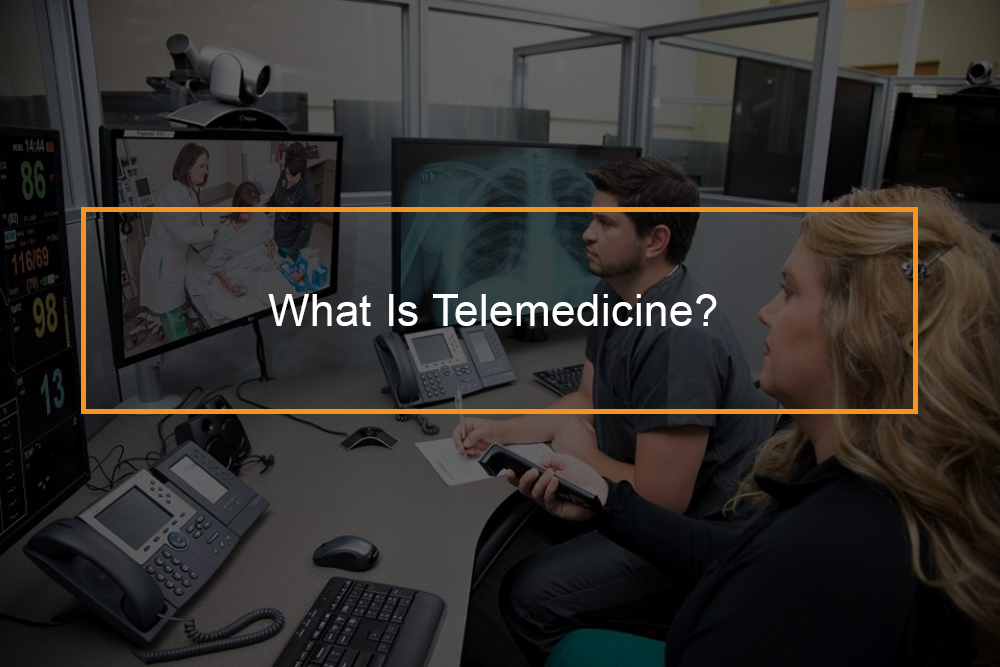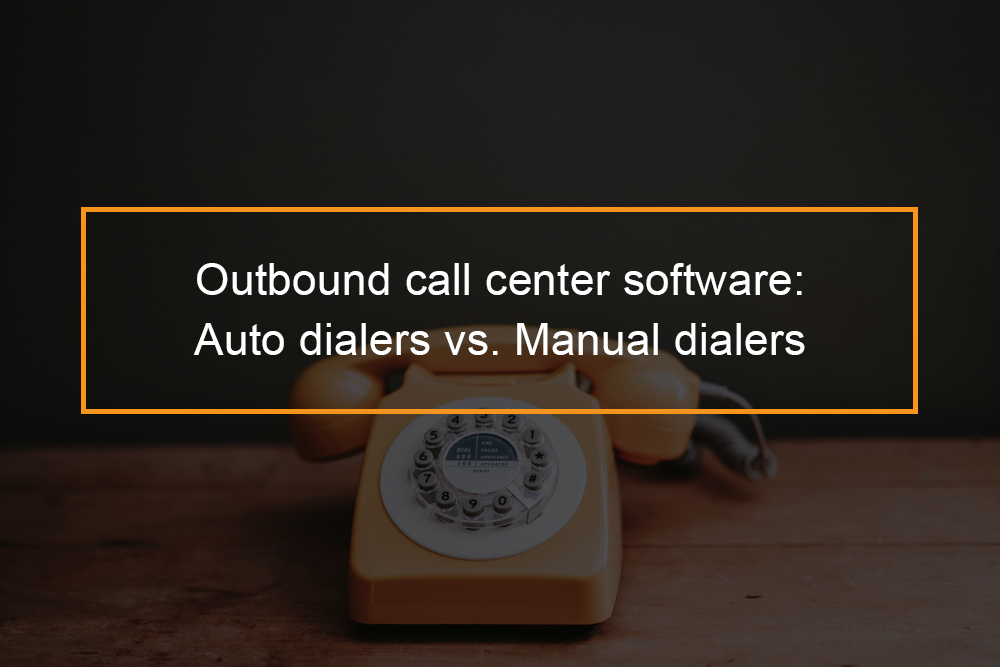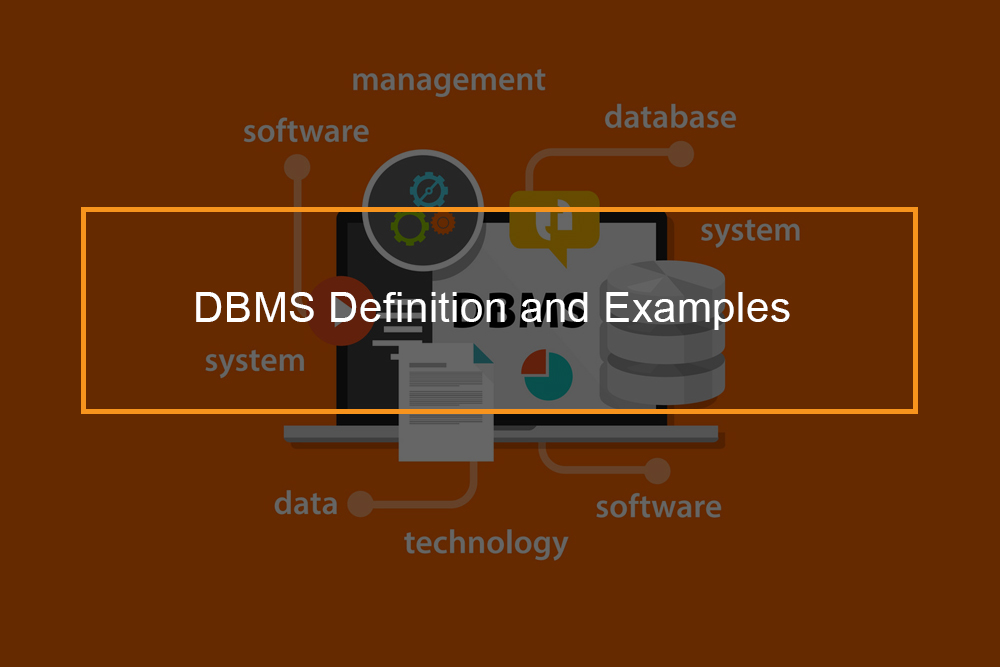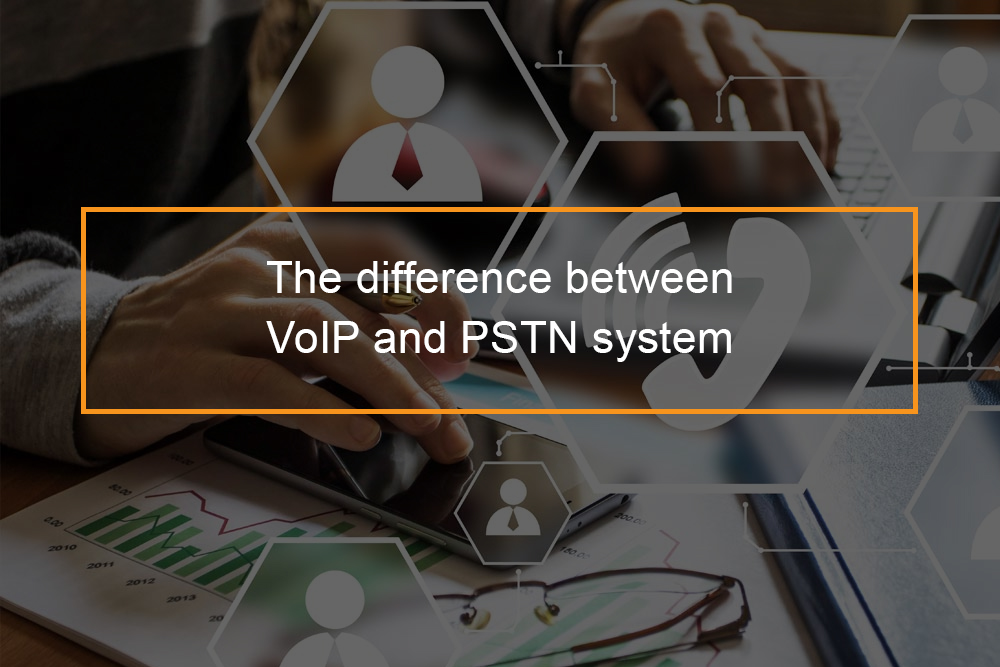
Telemedicine describes the practice of taking care of clients remotely when the provider and client are not physically present with each other. Modern technology has allowed doctors to seek advice from clients by utilizing HIPAA compliant video-conferencing tools.
Telemedicine Definition
What is The Meaning Of Telemedicine?
A tool that makes healthcare more available, economical, which increases patient engagement– is telemedicine. Since making its debut in the late 1950s, advances in telemedicine have contributed to seniors having the choice to age in location. Also, the clients that live in backwoods that previously had difficulties accessing a physician can now reach them practically.
Physicians and patients can share info in real-time from one computer screen to another. And they can even see and catch readings from medical devices at a distant place. Utilizing telemedicine software application, patients can see a physician for diagnosis and treatment without needing to wait for an appointment. Patients can speak with a physician at the comfort of their house.
The principle of telemedicine and telehealth could be still new to service providers and physicians because of the slow adoption of technology in healthcare. Nevertheless, the continuous advances in innovation and healthcare development have significantly expanded its usability. Moreover, the demand from the new generation of a tech-smart population has pushed for its rapid adoption due to benefit, expense conserving and intelligent functions it brings. It’s now a matter of time for the healthcare system, medical group, service providers and even solo specialists to integrate telemedicine as part of their medical services offering.
What is Telemedicine Healthcare?
Telemedicine is known as, “the remote delivery of healthcare services.” There are three typical kinds of telemedicine, which include however not restricted to:
- Interactive Medicine– which enables clients and physicians to communicate in real-time while maintaining HIPAA compliance
- Store and Forward– which allows providers to share patient information with a professional in another place.
The remote Patient Monitoring function is to permit remote caregivers to keep an eye on patients that live in your home by utilizing mobile medical gadgets to gather data (e.g., blood sugar or high blood pressure).
How is Telemedicine Set Up?
It can be smooth or complicated for a service provider to execute telemedicine into their practice. For solo specialist and clinic, a lot of require a necessary HIPAA certified video conference software application to start providing consultation for telemedicine. For providers aiming for a complete virtual center solution, they need to consider their existing workflow and integrate the telemedicine software option into their practice. Usually, this software requires a waiting space, EHR and payment function.
For large medical groups or health centers, they usually need customized telehealth solutions to fit into their existing workflow to decrease the interruption of embracing telemedicine as its harder to train many doctors to alter their behavior. Besides the software application part, it’s advisable for the supplier to do due diligence on the telehealth guidelines, and repayment policy for their country or state, which will be gone over later in this post.
Organizations will need to change operationally and understand the regulations, legalities, and technological aspects of carrying out telemedicine. Numerous organizations choose to partner with a telemedicine business to make the transition and implementation simpler. Inspect in-depth conversation for suggestions of executing telemedicine here.
How is Telemedicine Carried Out?
Telemedicine is carried out in many ways. The most fundamental is merely a simple video call (like you usually make with family and friends). Nevertheless, most nations require protected HIPAA compliant video conference tools, so telemedicine business also supplies this safe and necessary to use service for suppliers. Portable medicine sets are also used to conduct telemedicine. There are also some held with portable telemedicine that includes a computer system and mobile medical gadgets, such as ECGs or vital signs screens. High-resolution digital video cameras are also readily available for physicians to send in-depth medical images to specialists. Finally, there is a robust telemedicine software application that allows whatever from information storage to live video conferencing. In general, there are numerous ingenious telemedicine equipment to meet the different needs of patients today.
What is the Distinction Between Telehealth and Telemedicine?
Relation Between Telehealth and Telemedicine
Although we use the words interchangeably, there is a distinction between the two.
What is Telehealth?
Telehealth is the use of electronic details and telecommunications innovations to support and promote long-distance scientific healthcare, patient and professional health education, public health and health administration. While this sounds a lot like telemedicine, there is one clear distinction. Unlike telemedicine, telehealth likewise covers non-clinical events like administrative conferences, Physician training, and Continuing Medical Education (CME). Telehealth isn’t a unique service, but a collection of methods to improve patient care and education delivery. In general, one can think about telehealth as all-inclusive as telecare and telemedicine are under its umbrella.
Telehealth and Telemedicine
These terms telehealth and telemedicine bring with them plenty of dispute amongst individuals in the healthcare field. One reason for this argument is because of the varying definitions of the terms themselves. Some experts think about telemedicine to be physician focused and telehealth to include all health professionals in general. As innovation in the medical field continues to advance, the two terms will likely end up being more distinguishable. With these advances, there are luckily industry experts that keep up with the different changes for physicians and medical facilities. Healthcare companies thinking about implementing telehealth or telemedicine can work together.
History of Telemedicine
Development of Telemedicine Over The Years
Contrary to common belief, telemedicine is not a brand-new practice. In truth, the principle of telemedicine dates back to the 19th century! What started as a few medical facilities wishing to reach clients in remote areas ended up being an integrative system throughout the care continuum.
Telemedicine in the 19th Century
Creation of telemedicine started with the inception of the telecoms facilities, that included the telegraph, telephone, and radio. Casualties and injuries were reported utilizing the transmitter during the Civil War, in addition to the consultations and buying of medical products. It is one of the earliest adoptions of telemedicine technology. By 1879, a Lancet report went over how utilizing the telephone can decrease the variety of additional office visits. It was only the start of what would be a patient care change.
Telemedicine in the 20th Century
The year is 1922 when Dr. Hugo Gernsback features the teledactyl in a science magazine. Gernsback predicted that this sensory feedback gadget would permit physicians to see their clients via a TV screen and touch them from miles away with robot limbs.
In 1948, two medical staff at two various university hospitals in Pennsylvania had to share the very first radiologic images via telephone. The university hospital was 24 miles apart from one another! However, in 1959, doctors at the University of Nebraska transferred neurological examinations across campus to medical trainees using two-way interactive tv. Five years later on, a closed-circuit TV link was built that permitted physicians to offer psychiatric assessments 112 miles away at Norfolk State Hospital.
Telemedicine Today
Today, most people have access to necessary telemedicine gadgets like smartphones and computers. With improved ease of access, individuals in rural areas and busy city locations can get in touch with a service provider with ease. Home-use medical gadgets make it possible for caretakers to keep an eye on whatever from vitals to glucose levels. Physicians can gather essential medical info and make a diagnosis without clients stepping foot in a doctors office.
By 2020, telemedicine is anticipated to be a $35 billion market and be an essential piece of modern-day healthcare delivery. Telemedicine’s history shows that we’ve come so far from where we began, and yet still have a long way to go.
What are the Advantages of Telemedicine?
Referred to as a technological improvement that is changing the whole healthcare infrastructure, telemedicine is here to remain. Today, clients, providers, and payers alike can benefit from the development of telemedicine. Continue reading to discover how telemedicine is improving the healthcare system throughout the continuum.
How Telemedicine Benefits Providers?
Healthcare systems, physician practices, and experienced nursing centers are utilizing telemedicine to provide care more efficiently. Technologies that come integrated with telemedicine software applications like electronic medical records, AI medical diagnosis and medical streaming gadgets, can much better help companies in medical diagnosis and treatment. The latter allows providers to keep track of clients in real-time and adjust treatment strategies when essential. Ultimately, this leads to much better patient results.
Companies can also benefit from increased profits. By using telemedicine, doctors can see more clients without the need to work with more workers or increase office space. Specialists in telemedicine help companies set-up HIPAA-compliant telemedicine services that will enhance workflows and improve patient care.
How Telemedicine Benefits Patients?
Because of telemedicine, clients who formerly had minimal access to healthcare services can now see a physician without leaving their home. Senior citizens who would prefer to age in place can now do so with the use of medical streaming devices. There’s a reduction in the spread of disease because individuals with contagious diseases do not have to expose it to others in full waiting rooms.
Telemedicine also benefits patients in the following methods.
- Transportation: Patients can prevent costs of gas loans or wasting time in traffic with video consultations.
- No missing work: Today, people can schedule an assessment during a work break or perhaps after work hours.
- Childcare/Eldercare Challenges: Those who have a hard time finding care choices can utilize telemedicine options.
How Telemedicine Benefits Payers?
Although this is harder to prove, huge payers like Blue Cross Blue Shield and Aetna are taking advantage of telemedicine too. Clients with substance abuse conditions who are treated utilizing numerous telemedicine methods supply cost-savings for payers. The cost per treatment is less expensive total and offers cost savings throughout the board. Gradually as technology continues to improve, the cost savings will become more noticeable.
What are the disadvantages of telemedicine?
Although telemedicine brings with it numerous advantages, there are some drawbacks to it too. While the field will grow tremendously over the next few years, it will bring with it both useful and technological obstacles.
Uncertain Policies
Since innovation is growing at such a fast lane, it’s been difficult for policymakers to keep up with the market. There is extreme uncertainty concerning matters like compensation policies, privacy protection, and healthcare laws. Also, telemedicine laws vary in each state.
Currently, there are approximately 29 states with telemedicine parity laws, which require personal payers to reimburse in the very same way they would for an in-person see. As additional states adopt parity laws, meanwhile private payers may set up more guidelines and limitations for telemedicine services. Although it’s an action in the right instructions, there is still uncertainty concerning reimbursement rates, billing treatments, and more.
Less Face-to-Face Consultations
Many physicians and patients are discovering it challenging to adjust to telemedicine, specifically older adults. Patient management draws concerns for physicians. Despite advances in medicine enabling more efficient technology use, there are times when system outages happen. There is also the potential for a mistake as technology cannot always capture what the human touch can.
Technology Is Expensive
Healthcare systems that adopt telemedicine options can attest that it needs a great deal of time and money. Executing a new structure requires training, and in some cases staff members discover it challenging to invite this modification. Practice supervisors, nurses, doctors, and more have to learn how to utilize the system so that practices can see the benefits.
What are the Types of Telemedicine Services?
3 Types of Telemedicine Services
There are different kinds of telemedicine; there are a few different manners in which healthcare systems can utilize telemedicine to assist clients. In the previous section of the article, you’ll discover telemedicine is the approach of using telecommunications to link clients and manufacturers over a distance. Nowadays, there are three different types of telemedicine used, and it includes the following:
Interactive Medicine
Interactive medicine, likewise known as “live telemedicine,” allows patients and doctors to communicate in real-time while also preserving HIPAA compliance. Interaction methods include both phone consultations and video conferences. Physicians can evaluate a client’s medical history, perform psychiatric examinations, and more using interactive medicine.
Store and Forward
This type of telemedicine enables companies to share patient details with a practitioner in another area. For example, a medical care physician can now share patient records and medical information with a specialist without being in the same room. Systems can transfer details throughout huge ranges and different systems (in some cases), so one physician can understand what another has currently done. This results in less replicate testing and fewer instances of lousy medication management.
Remote Patient Monitoring
Likely a favorite amongst patients aging in location, telemedicine allows companies to monitor their clients in their own houses. Using client websites, a physician can collect and share information with their patients. Also, medical gadgets can send out essential indications and more to companies so they can make modifications to care as required.
What are the Applications of Telemedicine?
13 Applications of Telemedicine
Thanks to telemedicine, physicians have the terrific opportunity to get in touch with customers wherever they are. Clients who could not see a physician due to access to care concerns can now do so nearly flawlessly. However, lots of people may wonder what telemedicine most important applications are? We’ll find a few favorite ways that we can use telemedicine today.
Persistent Disease Management
With state-of-the-art medical gadgets, doctors can now monitor their clients health over cross countries. Touchscreen innovation allows service providers to access heart rate, blood pressure, glucose levels and more through the transmission of information from one device to another.
Leading telemedicine companies assists healthcare companies from being able to treat patients with persistent diseases. These companies recognize that close to 75% of the United States healthcare spending is devoted to addressing a heart problem, cancer, and diabetes. As a result, they’ve developed telemedicine solutions that can keep doctors informed from the health center to the house. Also, the client, their member of the family, and other healthcare professionals can work together in the client care procedure. Today, when readings fall out of variety, a physician can intervene in real time, which results in better health outcomes.
Medication Management
Those in the healthcare market recognize that medication management is a huge offer, specifically among senior citizens. Older grownups are more likely to forget to take their medications, which is where telemedicine is available Providers and other healthcare specialists can utilize telemedicine technology to keep an eye on when and if their clients took their medicine. As a result, this results in less healthcare facility readmissions and boosts medication compliance.
Sharing Medical Information
Store and forward, a kind of telemedicine that permits service providers to share information over a distance, has been a game changer. Today, medical care physicians can connect with professionals who remain in another location than them. Doctors should share healthcare info like diagnostic images, blood analysis, e.t.c. for proper patient evaluation in real time.
Emergency Clinic (ER) Diversion
Without a doubt, the emergency clinic is one of the most costly, overcrowded, and challenging environments in healthcare. With telemedicine, you can handle a full emergency clinic by having patients see a remote physician utilizing video chat first. The physician who’s in a different location can determine if that individual ought to look for treatment in an emergency department, which increases ED performance.
2nd Opinion
Today, there are telemedicine options that permit patients to look for a consultation from the conveniences of their home. Sending out another physician copies of your medical images and more can quickly be done by publishing the content to their safe and secure site. It is efficient for those who require an expert, however, lack the facilities to travel quite long distances or wait a long time.
Disaster Relief
When a disaster takes place, the local healthcare resources are instantly pulled in to supply both emergent and non-emergent care. It usually leads to a shortage as the demand for services is much higher than the provision.
The advantage of Telemedicine is that physicians in other locations can provide support by performing video checkouts. In truth, when Hurricane Harvey took place in 2017, healthcare experts offered emergency and behavioral health video visits. Specialists had the permission to focus on high demand, for complicated cases per individual vs. low-level cases that they could manage off-site.
Paramedic/Ambulatory
It’s rare for an emergency department to close down after reaching capability. It results in ambulances taking clients to hospitals that are farther away and this ultimately affects their outcome. By utilizing telemedicine, paramedics can use innovation to see the capability of an emergency room in real-time instead of heading to the healthcare facility and after that a diversion. Also, when the emergency clinic starts using video assessments to sort the patients, it gets the non-emergent cases out quicker. It causes less ambulance diversion and much better patient outcomes.
Telemedicine for Remote Clinics
In many Walmart stores, retail consumers can approach a kiosk for a physician assessment. The medical professional is not physically present inside the shop. Instead, the customer uses a touchscreen computer system to key in their signs and go into a virtual waiting space. The link is available through a video URL to a doctor. This use-case is HIPAA-compliant since the video link is encrypted to protect patient health details.
Mobile Health
In some cases the answer to the question “What is telemedicine?” is just mobile medicine. It doesn’t need a large desktop computer or a great deal of equipment. Activities that used to occur face to face are now accessible to do on a mobile phone. Both modern consumers and medical professionals are frequently using downloading apps and their smart devices for secure transactions. For instance, with MDLIVE the client opens the app and clicks to pick a medical professional, with whom they can speak either by video, phone, or instant message.
More recently, we are starting to see small scopes and other peripherals that can plug into a cell phone. These gadgets transform the phone into a pocket-sized medical diagnosis tool, excellent for point-of-care tests.
Telemedicine Reimbursement
A concern popular amongst organizations that want to execute telemedicine options is relating to how their doctors will receive reimbursement. With telehealth regulations different for each state and with payers establishing various policies, it is challenging to discover consistency. However, what is consistent is that telemedicine is advancing and it’s becoming difficult for the crucial players to keep up.
Telemedicine Repayment for Private Payers
Presently, there are 33 states plus the District of Columbia, that have parity laws that need private payer repayment for telemedicine services. All countries with parity laws need private payers to pay for video-conferencing. Until now, only a few states require reimbursement for a store and forward telemedicine. Organizations also need to comprehend that payment for telemedicine services may not equal that of onsite facilities.
Besides the limited amount of services, there is likewise a concern of which doctors can practice telemedicine. The state medical board chooses who can practice. Nevertheless, any company that can bill for onsite services can also charge for telemedicine.
Medicare and Telemedicine
Similar to personal payers, Medicare also will only compensate for particular services and practitioners. Providers that can lawfully supply telemedicine solutions are:
- Physician.
- Physician assistant
- Nurse practitioner.
- Nurse-midwives.
- Clinical nurse experts
- Medical psychologists and social workers
- Registered dietitians or nutrition specialists.
Medicare does not provide compensation for the store and future systems or digital tracking gadgets. They do repay for video conferencing and remote client monitoring that includes video conferencing. Physicians that supply services to patients in rural and underserved populations are likely to get compensation, but other places are presently off limitations. Also, Medicare will only spend for individual facilities to offer telemedicine services such as hospitals and rural health centers. Much of the compensation limitations found in the regular Medicare program are not relevant to the Medicare Chronic Care Management Program.
Medicaid and Telemedicine
Medicaid compensation varies for each state, but many countries use some protection for telemedicine services. Similar to Medicare, there are reimbursement constraints for client settings and facilities. As telemedicine continues to broaden and technology enhances, more states are removing geographical restrictions.
To date, all but two states repay for live video conferencing and most compensate for store-and-forward and remote client monitoring. Also, 29 countries need informing permission before receiving telemedicine services.
What is the Future of Telehealth?
The 5 Future Advancement of Telehealth
For healthcare companies and many clients alike, the future of telehealth is intense and exciting. Once we conquer the legal and repayment obstacles, telemedicine will have the ability to grow nationwide. Yearly, millions of Americans get care utilizing telemedicine options, and the numbers are increasing. With more clients using the service and more physicians offering it, telemedicine has no choice however to broaden. Here is what the future of telehealth appears like:
Online Medical Centers
Picture a 24/7 online collective platform for patients, staff and service providers. The vision for telehealth is a bunch of remote doctors treating patients from all over the country. With digital tracking devices and video conferencing, doctors can deal with and diagnose more patients in less time.
Telemedicine Across Borders
With innovation becoming increasingly robust, the future of telehealth might consist of global partnership. Some nations provide medical advances that the United States does not have easily offered (and vice versa). However, telemedicine would reduce the barriers.
Terrific Acceptability
As patients experience the lowered wait times and greater access to care, the hesitation regarding telemedicine will reduce. Physicians will also observe much better client results and more profits without an increased workload. Also, personal payers, Medicaid, and Medicare will respond to the need after strengthening the most excellent practices.
Health System Collaboration
Today, it is still tough to share electronic medical record information with a health system that uses a different EMR platform. In the future telehealth will likely include enhanced sharing abilities that will permit clients to look after no matter where they are adequate. Also, professionals predict that the electronic medical record will become more smooth and allow for sophisticated automatic patient billing.
Augmented Reality Mirrors
The future of telehealth likely consists of increased truth mirrors. The structure will combine augmented reality and adaptive image transformation for diagnostics and patient monitoring. With better imaging supplied by enhanced reality mirrors, service providers can better identify eye problems, skin issues, and even breast cancer.









